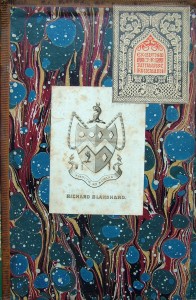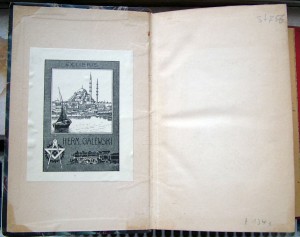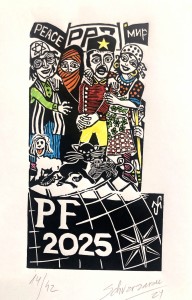Frequently Asked Questions
How should the word ex-libris be written?
Ex-libris derives from the Latin word Library. Latin is written with a hyphen (Ex-libris). It is also used as Exlibris without hyphen. It is known and used as Bookplate in English. In recent years, as in Balkan countries, it is also written as Ekslibris in Turkey. Exlibris is easier to read. Now, just like the words Fax, Ekselans, Ekstra, Ekspresyonizm, the transformation has taken place and the use of Ex-libris has become widespread. Ex-libris is also accepted in international competitions. It is also possible to write “from the bookshelf of …”, which is the exact equivalent of Ex-libris.
I want to order an ex-libris, what should I do?
An ex-libris is used either to fulfil its actual function, i.e. to be pasted into a book, or to be exchanged. Of course, it can also be framed and hung on the wall as a work of art. The choice of the artist, the technique, the size of the ex-libris and the purpose for which it is to be made are important in the ordering process. First of all, you should determine the artist whose style you like. You may have the opportunity to find and get to know artists and designers at exhibitions, ex-libris congresses, websites or social media. You should contact the artist whose works you like and tell him/her your expectations and interests. You should explain what kind of motif you want to have on your exlibris. After discussing the fee, the artist makes drafts for you, reproduces the one you like and signs it. You have the right to ask for revision on the draft you like. If you only want to stick your ex-libris on the book, 40 to 100 copies are enough. However, if you want to make a change, it is useful to have more prints. For those who have a large book collection, the printing house can print 1000 copies of the original ex-libris on sticker paper and stick them to their books. This type of offset reproduction only fulfils its function and collectors do not prefer it.
If you want to have an ex-libris that is original, special to you and contains aesthetic values, it is useful to work with an experienced artist who has proven himself in this field. The result will both make you happy and give you the opportunity to boast. However, recently, more economical ex-libris in the form of stamps are also made by printing houses and some people. If you prefer it, it is useful to check whether the work done to you is used elsewhere and whether it is original or not.
Can I order ex-libris on behalf of someone else?
Ex-libris is the most beautiful thing you can present to your loved ones, especially on their birthdays. Especially if you make an ex-libris for someone you know and know their interests, it will be accepted with interest and happiness because it is a special work for them.
How many types of ex-libris can one person have?
You can have any number and variety of ex-libris you want. In the past, you may like nature-themed ex-libris, while in recent years you may like mythology or other subjects. Why not have a new ex-libris?
How much does an ex-libris cost?
This depends on the reputation of the artist, the technique and the number of prints. For an edition of 100 copies of an original design, you can expect to pay between 350 euros and 1000 euros.

How should I glue the ex-libris to my books?
Gluing with adhesives such as glue is not recommended. It will prevent a collector from buying that ex-libris to collect it years later, it will tear. Ideally, you can use paper stickers, double-sided adhesive tapes or you can use starch adhesive that you prepare yourself. You may come across ex-libris belonging to different people in one book. The owner of the book has changed.
Which paper should be used for printing ex-libris?
There is no rule for this. Not every design shows itself on every paper. Different papers suitable for printing technique can be used. Şöhler, Kanson papers are suitable for digital prints. Bristol for high prints and screen printing, absorbent, slightly thicker gravure papers are used for gravure printing. Ex-libris can also be printed on beautiful handmade paper. File paper or coloured cardboard should not be preferred.
Should different sizes of ex-libris be used for different book sizes?
Considering small-sized books, it is recommended that the long side of the ex-libris printing area should not be larger than 13 cm and the paper on which it is printed (A5) should not be larger than 21×15 cm. This is especially stated in competitions. As well as 1 cm ex-libris, of course, there are also ex-libris in a size that can be glued to large books, for example 15×15 cm ex-libris. Since the collections are stored in A5 boxes in museums, it is useful to take care that the paper size is no larger than A5.
Is there ex-libris collecting? How can I become a collector? How can I make an exchange?
Ex-libris are evaluated according to countries, artists, techniques, styles and even patterns and are collected by many enthusiasts. Collectors exchange the duplicate prints they have with other people, thus acquiring a large number of ex-libris. Their aim in these exchanges is to improve their own collections both in terms of quality and in terms of number. As a result of their collecting activities, they also learn about the art and printing technology of different periods. These small prints must be signed by the artist. It must be stated when, how many and with which technique they were printed. Aesthetic integrity, text placement and technical competence are important issues that collectors pay attention to.
Collectors collect ex-libris on a wide range of subjects according to their interests and place orders with artists who work on the subjects they are interested in. It is known that collectors classify and collect ex-libris on heraldry, professions, work environments, home interiors, weapons, clothes, music, musical instruments, books, libraries, printing workshops, architecture, engineering, medicine, art, mythology, astrology, sports, theatre, dance, nude, women, children, portraits, typography, calligraphy, monograms, erotica, word games, botany, zoology, ceremonies, war, death and many similar subjects.
Collectors store and present their ex-libris in different ways. Ex-librises are usually stored by pasting them on standard cards. These cards are A4 in size and may include the name of the artist, year of birth and death, country, association of which he/she is a member, printing technique of the ex-libris, year of production, total number, and the name of the owner.
Another way of storing ex-libris is enveloping or boxing. They can be stored in appropriately sized envelopes and boxes, categorised according to artists, techniques, countries, periods or subjects. Despite the difficulty in presentation and examination, boxing is the best method to protect ex-libris against wear and tear.
Experienced collectors are usually happy to help beginners by giving them a few ex-libris. In order to accumulate ex-libris, it is necessary to be in contact with artists and collectors, to request the exchange of excess copies from the artist whose work you are interested in, and to take part in exchanges at congresses. Of course, you can also increase your collection by purchasing from the internet, for example from ebay.com https://www.ebay.com/sch/i.html?_from=R40&_trksid=p4432023.m570.l1313&_nkw=exlibris&_sacat=0 or from artists.
How should I send the ex-libris in a mail exchange?
Ex-libris should have the necessary information on the back. The artist’s name, country, date of creation, subject, technique, edition number and opus number, if known, should be written in pencil on the back. Some collectors may also include exchange lists in their letters. In order to prevent wrinkles and fraying when exchanging letters, either a cardboard envelope should be used or a suitable cardboard should be placed inside the envelope. Considering the risk of loss, it is useful to send letters by registered mail.

Where should the ex-libris be placed in the book?
The correct placement is in the centre of the inside of the book cover. If the stamp is an ex-libris, it can of course also be printed on the first page.
“Pour Féliciter” or “Pro Felicitate” means “for happiness”. PF is an abbreviation of these words. They are artistically designed personalised greeting cards for the New Year. In contrast to their ex-libris, PFs often have a contemporary historical reference and are therefore a historically interesting collecting area.
For further enquiries: hasipp@gmail.com






Leave a reply